
Through the staging of its contemporary displays, the 2011 Chengdu Biennale highlights Chengdu’s efforts to transform itself into a “Modern International Garden City”. The dominant and overall theme of the 2011 Chengdu Biennale, “Changing Vistas: Creative Duration”, is intended to express how the garden city represents visible spatial change while duration indicates those spatially invisible layers of culture and art which play such a basic role within urban space. It will be held from 29th September through to 30th October 2011.
2011 CHENGDU BIENNALE adopted a “government plays a supportive and leading role, professional organizations operate” strategy. The biennale organization committee is established through the efforts of CCP Chengdu Propaganda Department and various cultural and art enthusiastic institutes are involved. Among which Chengdu Xingcheng Investment Co., Ltd. sponsors International Architecture Exhibition, Chengdu Media Culture Investment Co., Ltd. sponsors International Design Exhibition, Institutions of Chinart sponsors Art Exhibition and ETG Group sponsors Conference Center Exhibition, along with governmental supportive subsidies, a total sum of 35.3 million was invested in this edition, which reaches the highest in history.

Curator-in-chief-Lv Peng
Seven platforms — three theme exhibitions: Pure Views: Contemporary Art Exhibition, The Solutions: International Design Exhibition, Holistic Realm: International Architecture Exhibition and Conference Center Exhibition, Special Invitation Exhibition, Classic Drama Performances, and Folk Art Exhibitions and displays— are installed to show comprehensively in contemporary art fields of painting, sculpture, installation, video, interior design, architecture design and fashion design.
Based on previous biennales, 2011 Chengdu Biennale absorbed operation modes of major international biennale. It’s planned to invite more than 200 artists from dozen countries and regions of Europe, America and Asia to participate in the exhibition, seeking to present a high-level international art pageant. 2011 CHENGDU BIENNALE will not only promote the development of Chinese contemporary art, but also signify Chengdu’s Modern International Garden City construction, as well as further upgrading urban culture quality and the development of cultural undertakings.
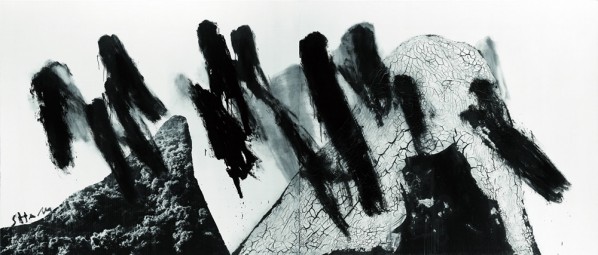
Shang Yang's Work
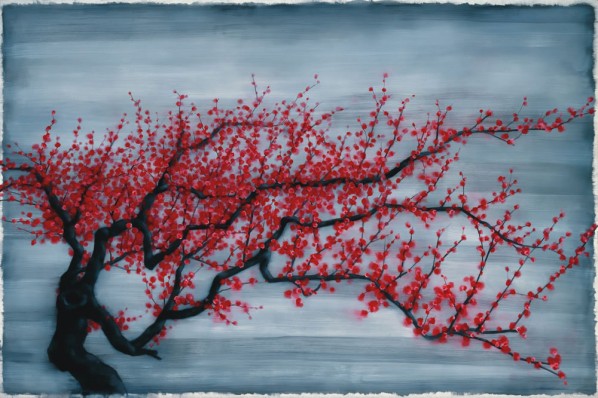
Zhang Xiaogang's Work
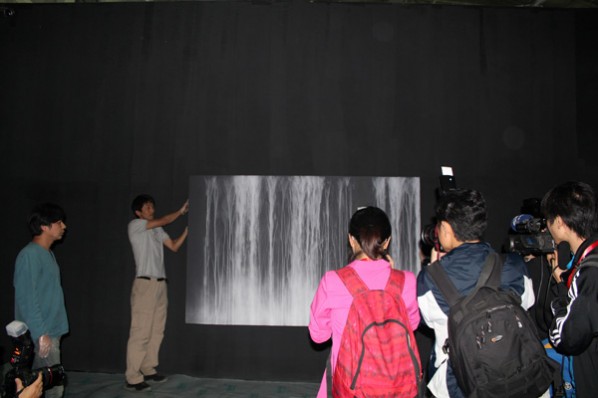
SenJu Hiroshi's Waterfall
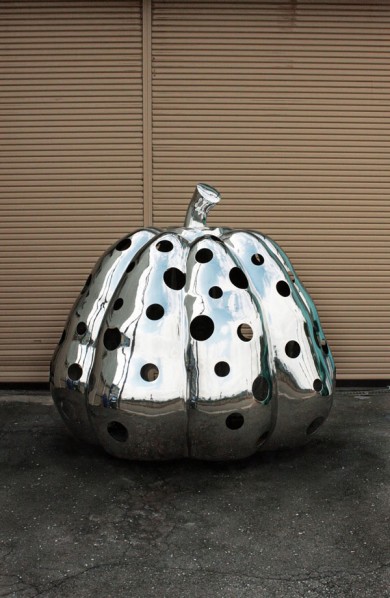
Yayoi Kusama's Work
CURATORIAL CONCEPT OF THE BIENNALE--Changing Vistas: Creative Duration
Changing Vistas
In describing the significance for the creative individual of the Chinese concept of changing vistas as “material colouring” or “the colours of matter” (wù sè), the 5th century critic Liu Xie in his work The Literary Mind and the Carving of Dragons explained how an artist would hover among the many objects of creation, and deeply ponder what he saw and heard. In envisioning a scene, the artist would flow with the changes of the object, and arrange the sounds or images he chose, so that the material world harmonized with the movements of his heart. In effect, Liu Xie, through his descriptions of the artist’s mental flow and hesitation, was describing the subjective aspects of creativity, and the way in which material and spiritual aspects complement each other in the act of creation.
Creative Duration
Through his use of the term “duration”, Henri Bergson raised the question of directly perceiving time, “psychological time”, in contrast to that time which is measured in space by the clock. “Duration” is true time, and Bergson recognized that such time could only possibly exist as the accumulation of memory, and that its essence was unending flow and change.
The dominant and overall theme of the 2011 Chengdu Biennale, “Changing Vistas: Creative Duration”, is intended to express how the garden city represents visible spatial change while duration indicates those spatially invisible layers of culture and art which play such a basic role within urban space. At the same time, the changing vistas with “material colouring” denote the response in the human consciousness to the “garden city”; in this context “duration” indicates the immediate and present existence of the traditional notion of what was past. Indeed, the changing vistas indicated by “material colouring” highlight an ancient Chinese concept that matches the architectural notions of “future space” (architecture in the garden city) and the design exhibition’s “way (dao) of strategic resolution”; “duration” occupies an important position in modern art theory, as well as quietly resonating with the thinking behind the eternal pure landscapes presented around the theme of “pure views”, fully translatable as “pure and remote streams and mountains”. An ancient Chinese concept thereby finds its echoes in a modern Western concept, and it is fitting that this conceptual fusion provides the theme for the 2001 Chengdu Biennale, as well as an annotation and response to Chengdu’s own ambitious “garden city” project.
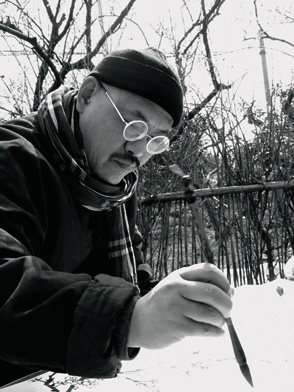
Chen Ping

Chen Ping's Work

Gu Wenda
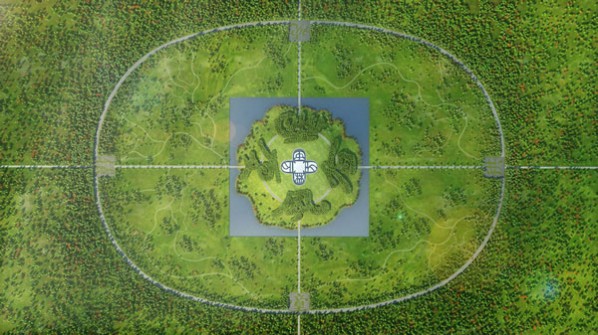
Gu Wenda's work

Gu Wenda's Work-02
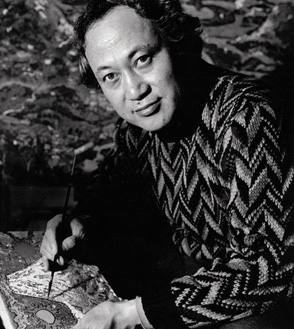
Kinutani Koji
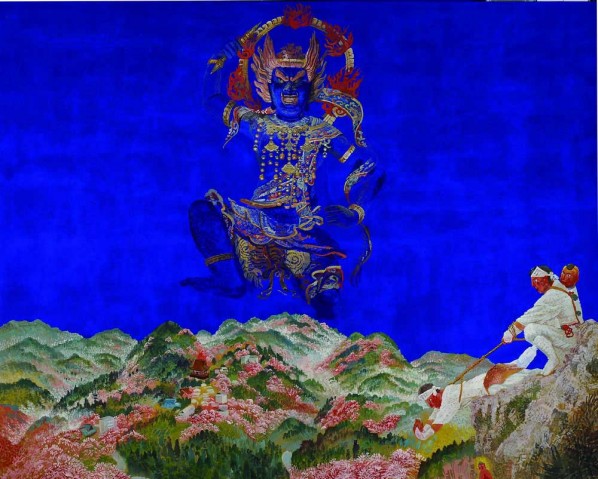
Kinutani Koji's Work
BASIC INFORMATION OF THE BIENNALE
Theme Exhibitions
Pure Views: Contemporary Art Exhibition
Curator: Lv Peng
Duration: 29th September – 30 October 2011
Venue: East Chengdu?Music Park
Contents of Exhibitions: Three platforms for foreign and domestic participants organized around themes related to “Pure Views” – Purity (literally, Pure Streams, Xiqing溪清), The Remote (literally, Remote Mountains, Shanyuan山遠), and Alternatives (literally, Forking Paths, Luqi路岐).
The Solutions: International Design Exhibition
Curator: Ou Ning
Duration: 29th September – 30th October 2011
Venue: East Chengdu?Music Park
Contents of Exhibitions: Six platforms, namely Product Design, Furniture Design, Architectural Design, Fashion Design, Visual Design, and New Media Design, with participation by foreign and domestic organizations and individuals.
Holistic Realm: International Architecture Exhibition
Curator: Zhi Wenjun
Duration: 29th September – 30th October 2011
Venue: Chengdu Industrial Civilization Museum
Contents of Exhibitions: Four platforms, namely Holistic Realm: Gardens/Cities/Architecture, theme exhibition; Holistic Realm: Gardens/Cities/Architecture, documenta; City Development Cup Competitive Show featuring the design work of tertiary student; and Gardens/Cities/Architecture: Chengdu Creative Industries Architectural Design Exhibition. Assessment of the student entries will be conducted by a judging panel comprising prominent international and Chinese architects and designers.
Other Events
The 2011 Chengdu Biennale has organized a number of peripheral events, including Reappearance Realism: Easel Painting Exhibition, Special Invitation Exhibitions, Classic Theatre Performances and Folk Art Exhibitions, to provide an opportunity for young artists, and curators, to savor classical and folk performances of an international caliber.




























